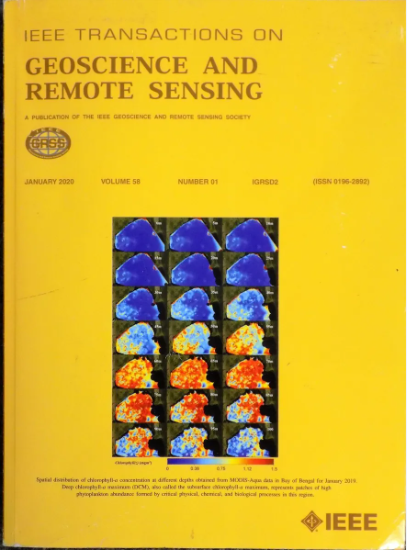Hybrid Multistrategy Remora Optimization Algorithm-Based Band Selection for Hyperspectral Image Classification
IF 8.6
1区 地球科学
Q1 ENGINEERING, ELECTRICAL & ELECTRONIC
IEEE Transactions on Geoscience and Remote Sensing
Pub Date : 2024-09-17
DOI:10.1109/TGRS.2024.3462752
引用次数: 0
Abstract
Hyperspectral image (HSI) is celebrated for its detailed spectral information but faces significant challenges in dimensionality reduction stemming from excessive spectral dimensions. Band selection (BS) is a critical technique in dimension reduction, aiming to identify an optimal subset of spectral bands with minimal redundancy and maximal feature separability. Swarm intelligence methods are renowned for their flexibility and high performance in optimization problems. These methods have been extensively introduced by scholars to address BS tasks in hyperspectral imaging. Among these, the remora optimization algorithm (ROA) stands out for its exceptional optimization proficiency. However, its conventional evolutionary operators are susceptible to local optimum stagnation. Therefore, a novel BS method based on an improved ROA, termed IROA-BS, is proposed for HSI classification. First, an evaluation function is designed to estimate the class separability and redundancy of selected band subsets. Second, the hybrid evolutionary operators are intended to diversify potential solutions, while a multistage mutation module is implemented to circumvent local optimum stagnation. Furthermore, a guided learning strategy is utilized to fine-tune the equilibrium between exploration and exploitation processes. The effectiveness of the proposed IROA-BS method is rigorously validated across three widely recognized hyperspectral remote sensing image datasets. Comparative analysis with the other advanced BS methods and swarm intelligence techniques validates the superiority and efficacy of the IROA-BS method in HSI BS applications.基于多策略雷莫拉优化算法的混合波段选择用于高光谱图像分类
高光谱图像(HSI)因其详细的光谱信息而备受赞誉,但由于光谱维数过高,在降维方面面临巨大挑战。波段选择(BS)是降维过程中的一项关键技术,旨在找出冗余度最小、特征分离度最大的最佳光谱波段子集。蜂群智能方法以其在优化问题中的灵活性和高性能而闻名。学者们广泛引入这些方法来解决高光谱成像中的 BS 任务。其中,remora 优化算法(ROA)因其卓越的优化能力而脱颖而出。然而,其传统的进化算子容易出现局部最优停滞。因此,我们提出了一种基于改进型 ROA 的新型 BS 方法,称为 IROA-BS,用于 HSI 分类。首先,设计了一个评估函数来估计所选波段子集的类别可分性和冗余性。其次,混合进化算子旨在使潜在的解决方案多样化,而多级突变模块则用于避免局部最优停滞。此外,还利用引导学习策略来微调探索和利用过程之间的平衡。所提出的 IROA-BS 方法的有效性在三个广泛认可的高光谱遥感图像数据集上得到了严格验证。与其他先进 BS 方法和群集智能技术的对比分析验证了 IROA-BS 方法在 HSI BS 应用中的优越性和有效性。
本文章由计算机程序翻译,如有差异,请以英文原文为准。
求助全文
约1分钟内获得全文
求助全文
来源期刊

IEEE Transactions on Geoscience and Remote Sensing
工程技术-地球化学与地球物理
CiteScore
11.50
自引率
28.00%
发文量
1912
审稿时长
4.0 months
期刊介绍:
IEEE Transactions on Geoscience and Remote Sensing (TGRS) is a monthly publication that focuses on the theory, concepts, and techniques of science and engineering as applied to sensing the land, oceans, atmosphere, and space; and the processing, interpretation, and dissemination of this information.
 求助内容:
求助内容: 应助结果提醒方式:
应助结果提醒方式:


